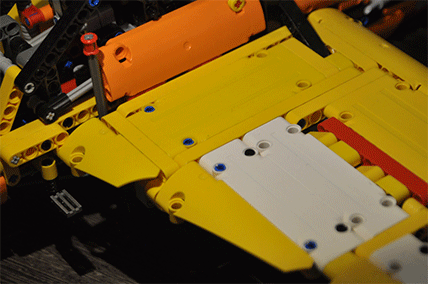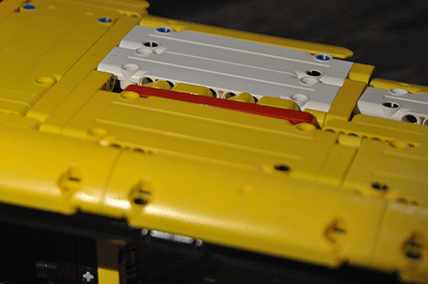FLAPS
Flaps are the most common high-lift devices used on aircraft. These surfaces, which are attached to the trailing edge of the wing, increase both lift and induced drag. Flaps allow a compromise between high cruising speed and low landing speed, because they may be extended when needed, and retracted into the wing’s structure when not needed.
A three flap position system (cruise, approach and take-off/landing) has been implemented in the model. An only lever with an interlocking system controls the left and right flaps set simultaneously.


SPOILERS
Found on many gliders and some aircraft, high drag devices called spoilers are deployed from the wings to spoil the smooth airflow, reducing lift and increasing drag. Spoilers are rare in small planes like ours, but the system has been implemented for educational purposes. On gliders, spoilers are most often used to control the rate of descent for accurate landings. Deploying spoilers allows the aircraft to descend without gaining speed. Spoilers are also deployed to help reduce ground roll after landing. By destroying lift, they transfer weight to the wheels, improving braking effectiveness.
In the model, the spoilers are driven by a rotatory lever in the opposite site of the flaps lever.
SECONDARY CONTROL SURFACES
In some airplanes you can find secondary control surfaces in order to add fly performance. So, flaps and spoilers are implemented in this model too.



